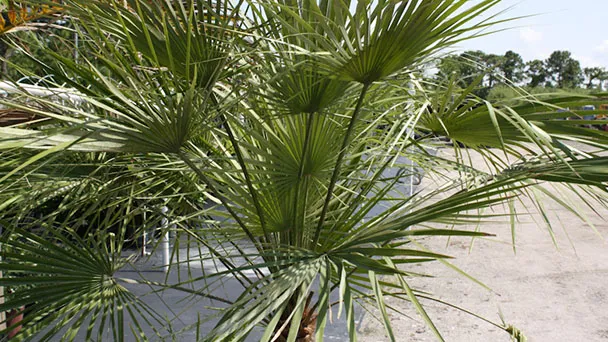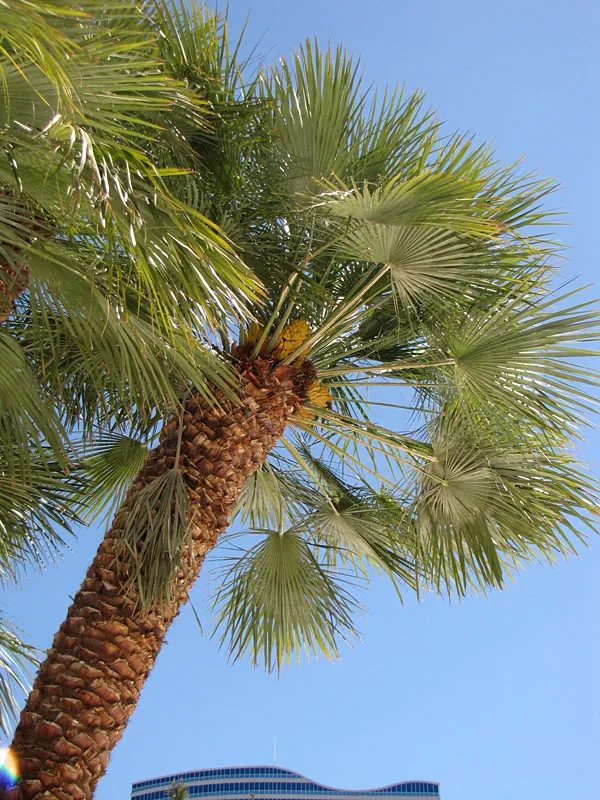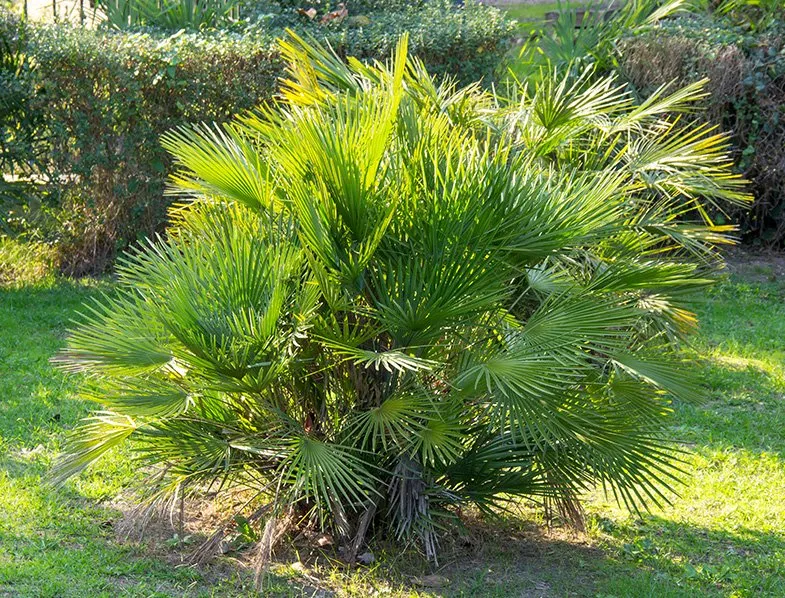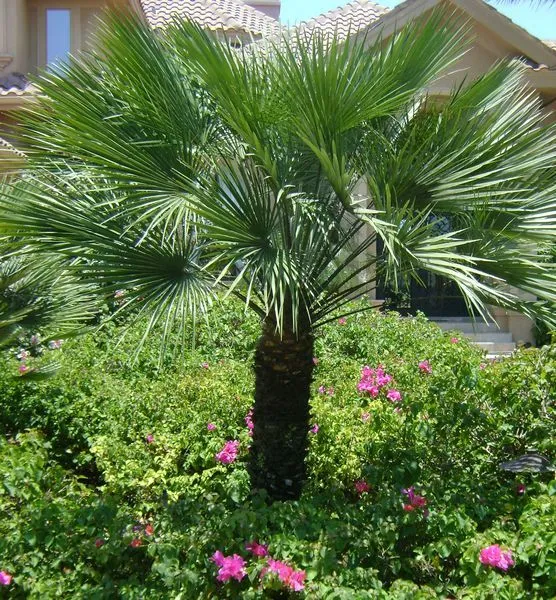How to Grow European Fan Palm (Chamaerops Humilis)
Written by Ivy
Dec 01 2021

European fan palm (Chamaerops Humilis) is one of the most tenacious species. European fan palm can survive in extremely cold temperatures without serious damage. At the same time, European fan palm is evergreen all year round and tall and straight, which is deeply loved by horticultural lovers. So How to grow and care for European Fan Palm? Let's see it together.
 The planting of European fan palm should be carried out when the temperature is above 18 ℃ in spring, and then the temperature rises gradually and the water evaporation is small, which is conducive to the rejuvenation and growth of European fan palm. If we want to plant European fan palm in autumn, we should reserve more than 2 months of continuous growth time to keep warm in cold winter, otherwise it is still easy to cause plant death in the end.
The planting of European fan palm should be carried out when the temperature is above 18 ℃ in spring, and then the temperature rises gradually and the water evaporation is small, which is conducive to the rejuvenation and growth of European fan palm. If we want to plant European fan palm in autumn, we should reserve more than 2 months of continuous growth time to keep warm in cold winter, otherwise it is still easy to cause plant death in the end.

Usually, we can change the basin for European fan palm every 2-3 years in spring. When changing the basin, we should pay attention to applying some organic fertilizer at the basin bottom as the base fertilizer, and compact the newly filled basin soil. After changing the basin, we must pour water once, and put the basin in a cool place. European fan palm can be moved to a sunny place for maintenance after a week.
We can clean up rotten plants and seriously diseased plants and seedlings in time to reduce the source of infection. We can remove the disease leaves and spray it with 50% carbendazim 500 times, or remove the spot after smearing. The propagation of European fan palm is mainly carried out by sowing. After the fruit is ripe, pick it, and take out the seeds after drying. It is best to sow immediately. We can soak the seeds in warm water for a whole day. The seeds after germination are easier to germinate. Prepare suitable nutrient soil, sow seeds into the soil, cover a layer of 3cm soil, and then water once every 2-3 days.
The propagation of European fan palm is mainly carried out by sowing. After the fruit is ripe, pick it, and take out the seeds after drying. It is best to sow immediately. We can soak the seeds in warm water for a whole day. The seeds after germination are easier to germinate. Prepare suitable nutrient soil, sow seeds into the soil, cover a layer of 3cm soil, and then water once every 2-3 days.
European Fan Palm Quick InfoWhen to Plant European Fan PalmEuropean Fan Palm Care in DetailEuropean Fan Palm WateringEuropean Fan Palm SoilEuropean Fan Palm TemperatureEuropean Fan Palm FertilizerEuropean Fan Palm PruningEuropean Fan Palm RepottingEuropean Fan Palm Pest & Disease ControlEuropean Fan Palm Propagation from Seed
European Fan Palm Quick Info
| Botanical/Scientific Name | Chamaerops Humilis |
| Common Name | Mediterranean Fan palm,European Fan Palm |
| Uses | In landscaping as an ornamental plant |
| Origin | Europe and North Africa |
| Light Care | Full sun |
| Soil Care | Loamy, moist, well-drained |
| Temperature Care | Tolerate 0 to 10 °F |
| Humidity Care | 40% relative humidity |
| Watering | Watered regularly |
| Pruning Care | Prune half-brown fronds |
| Fertilizer Care | Slow release fertilizer |
| Propagation | By seed and by removing and separating suckers |
| Toxic | Toxic to cats and dogs |
| Flower Color | Bright yellow flowers |
When to Plant European Fan Palm

European Fan Palm Care in Detail
European Fan Palm Watering
European fan palm likes a humid environment, so watering is very important, but do not water too much, especially do not accumulate water, otherwise European fan palm will rot. Generally, we can water once a week or so. Due to the high temperature in summer, we can appropriately increase the watering frequency. It is also possible to water once a day. European fan palm grows slowly in winter. We can appropriately increase the watering cycle and water it once every 10 days.European Fan Palm Soil
European fan palm likes acidic soil rich in humus. The topsoil is sandy loam and the subsoil has a layer of loose clay, which is ideal.European Fan Palm Temperature
European fan palm is native to tropical and subtropical regions. Its normal growth temperature is 22-30 ℃. If it is lower than 15 ℃, it will enter a dormant state, and if it is higher than 35 ℃, it is not conducive to its growth. European fan palm can withstand - 15 ℃ low temperature and has strong cold resistance.European Fan Palm Fertilizer
In addition to laying enough base fertilizer during the colonization of European fan palm, we should apply organic fertilizer or compound fertilizer to European fan palm seedlings every 1-2 months. We also need to apply European fan palm every quarter during the growing season (may October). All kinds of organic fertilizer or compound fertilizer can be applied. When the temperature decreases in autumn, we need to apply less nitrogen fertilizer. When the temperature is lower than 15 ℃, we should stop fertilization to avoid cold damage to the growing new leaves in case of low temperature.
European Fan Palm Pruning
The yellow and falling leaves of European fan palm need to be trimmed regularly. Dead branches and dead leaves improperly cultivated also need to be trimmed in time. Another case of European fan palm pruning is to maintain the plant type. If the stems are too dense, if the stems can be cut for the beauty of the plant type, the stems need to be pruned about 10cm in the basin soil. In addition, cut the flower stems after flowering to reduce the impact of nutrient consumption.European Fan Palm Repotting
When Repotting in European fan palm, in order to reduce plant steaming rattan and improve the survival rate, we need to cut off some leaves, leaving only 3-5 leaves, or even only 1-2 heart leaves, and the rest should be cut off. However, it takes a long time to recover to the complete crown, generally 2-3 years. If you want to achieve the effect of greening layout quickly, you can not cut the leaves, but take rehydration measures after planting, or wrap the trunk with straw or put up a shed for shade, and spray water to European fan palm in the morning, middle and evening every day.Usually, we can change the basin for European fan palm every 2-3 years in spring. When changing the basin, we should pay attention to applying some organic fertilizer at the basin bottom as the base fertilizer, and compact the newly filled basin soil. After changing the basin, we must pour water once, and put the basin in a cool place. European fan palm can be moved to a sunny place for maintenance after a week.

European Fan Palm Pest & Disease Control
European fan palm mostly starts from the base of the petiole, first produces yellowish brown disease spots, and extends upward to the leaves along the petiole, and the diseased leaves gradually wither and die. The disease spots extend to the trunk to produce purplish brown disease spots, resulting in discoloration and necrosis of vascular bundles and decay of trunk; The leaves wither and the plants tend to die. If the young tissue decays at the dry tip of European fan palm, it is more serious. Many white hyphae are common at the base of withered petioles and rotten leaves. After the upper part of the local area died, the underground root system soon decayed and died. The pathogen is pseudopenicillium.We can clean up rotten plants and seriously diseased plants and seedlings in time to reduce the source of infection. We can remove the disease leaves and spray it with 50% carbendazim 500 times, or remove the spot after smearing.
European Fan Palm Propagation from Seed

- Collecting seeds: When the European fan palm fruit is ripe in November, we can pick the ripe fruit, dry it and take out the seeds. It is best to sow immediately or store in a cool and dry place.
- Germination: Before sowing European fan palm, do a good job of germination. Put the collected European fan palm seeds into warm water of about 60 ° and soak them for about one day.
- Soil preparation: European fan palm seed is suitable for growing in soil with strong water retention capacity, so it is necessary to prepare suitable nutrient soil for it.
- Start sowing: We can put the treated seeds into the soil evenly, and finally cover it with a layer of soil. The germination ability of European fan palm seeds is not very strong, so the soil should not be too thick, about 3cm. We can replenish water about 2-3 days after sowing in European fan palm, and sprout in 40-50 days.
Latest Updated
- Benefits of Bugleweed - 7 Science-backed Health Benefits
- Bugleweed Dangers & Side Effects - Is It Poisonous?
- How to Plant Evergreen Trees - What You Should Know
- When to Plant Evergreens - Grow Guide for Evergreen Trees
- 12 Wonderful Evergreen Shrubs for Your Garden
- 12 Popular Evergreen Plants with Pictures for Beginners
- When And How To Prune A Lilac Bush Like a Pro
- How to Grow & Care for Lilac Vine (Hardenbergia Violacea)
- Japanese Lilac Tree (Syringa Reticulata) Care & Propagation Guide
- Shumard Oak Pros and Cons - What to Know
Popular Articles
- Winter maintenance of Antirrhinum Majus
- How to Grow Terminalia Mantaly Tree
- How to Grow and Care for Crossostephium Chinense
- How to grow Antirrhinum Majus in spring
- Peristeria Elata (Dove Orchid) Profile: Info & Care Guide
- Underwatered Snake Plant (Sansevieria Trifasciata) - Signs And How To Fix
- How to Care for Brazilian Jasmine Plant (Mandevilla Sanderi)
- How to Grow & Care for Graptopetalum Purple Delight in Summer
- Rosa Chinensis (China Rose): Plant Growing & Care Tips
- How to Care for Baby Sun Rose (Aptenia Cordifolia)